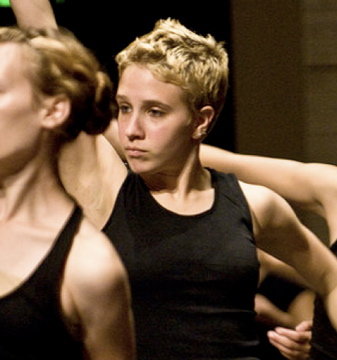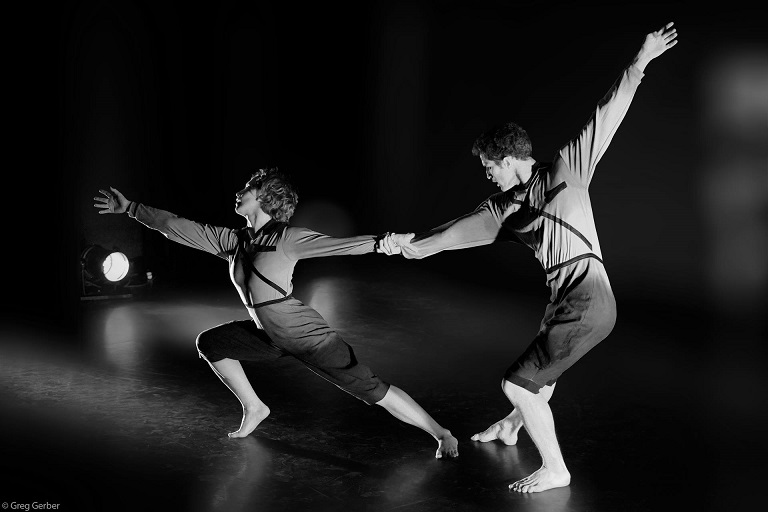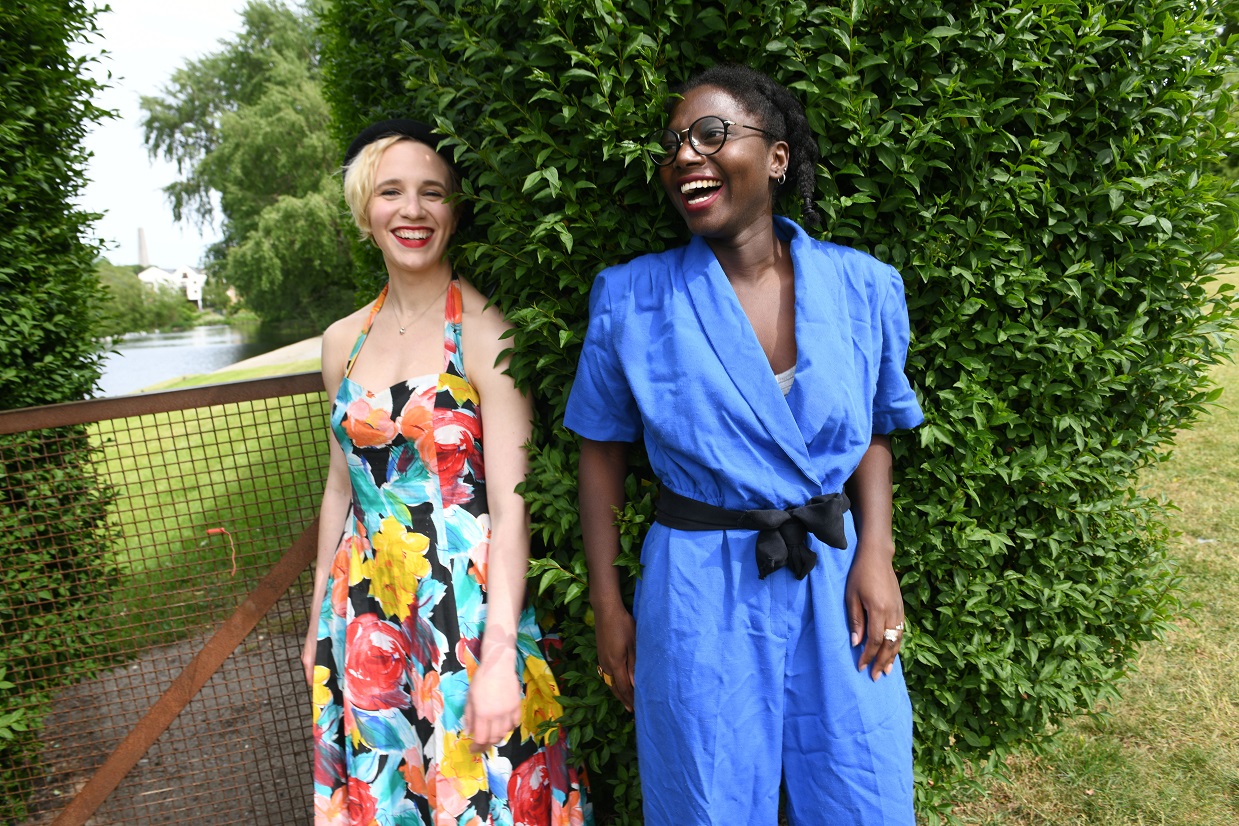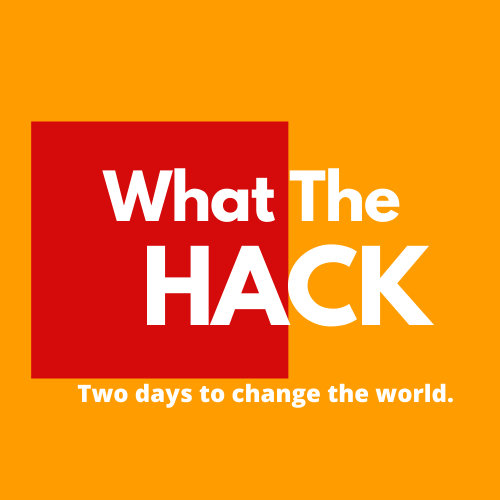How can you shift from classical ballet into the tech field? It seems almost like ‘mission impossible’, right? But not for Caitlin Hafer, the co-founder of What the Hack. And discussing with her, we found out that ballet and tech have many facets in common. Caitlin started to do work in choreography when she was 17-18 years old, and at a certain point she needed a change. She did the change so well that today she is the co-founder of What the Hack, together with Sophie Benoit. Here, Caitlin organises hackathons and different other startups events. All this while , she never gave up fully the choreography part of her life. So, how was the part to change toward digital marketing and tech-startups, what these two fields have in common, how to make the change, where are all the questions for which we sat down with Caitlin

If you ask what have in common the startup world and the art world, the first answer that comes to mind is: nothing! But, for Caitlin, at least at the process level, they are “almost exactly the same” – and she realized that when she started to make hackathons. “So you come in with an idea and you say okay here’s my idea and you research a bit and see what you want to do with it. Then you show that to people, and you realise what works and what doesn’t, and you get rid of what doesn’t work and then you fine tune it again. And then you try it out on a bigger scale and you figure out what works.” And this is the process, very shortly, that describes doing an MVP in a hackathon, but also starting a new art project. And obviously , you have to narrow it down the product, at the bits it has to be. “And this is what gets rid of all the extra bits so testing is really important in choreography and you can add tonnes or elements that might not need to be there, but they look cool. And then, you can strip away everything that you don’t need so you can get down to like what people actually want, what they’ll use, what they’ll pay for, what they’ll enjoy, what they’ll come back to again – and it is the same for tech products and for choreography.”
Also, Caitlin considers that many times, artists are doing prototyping, it is just it is named differently. When you work on an art project, you if you want to make it better or you have to fix something, “I just send/show it to somebody and ask them to tell me what they like. And in that sense, you are prototyping it before you get to final stages. Even if you’re just working on it myself, and say like “oh that doesn’t feel right, I’m going to change that they cannot sense the idea”, it’s similar to the same process of prototyping”.
How are tech and art products sold? Maybe, this is more obvious, sales is sales. In case of choreography is all about “how do you get people to show up for your performance, while for the tech is about how do you pitch it to somebody, or how do you mark it so that people will see the relevance of it and they’ll see that okay this isn’t something I can get anywhere else or this is something that I actually kind of need to have in my life. But, I feel it’s really like the same process”, says Caitlin.
So, how to make a shift, in case you wanted? Caitlin shifted toward digital marketing, and she has made a formal study to get the official degree. With a background in dance, but she also liked math, and as digital marketing is both about communication and analytics, she found it interesting the mix between the creative parts with numbers. But, if she would give advice to to others? She gave us some very good advice, and here are!

1. Figure out what it is in your creative field that you really like. So, is it the communication side of it or the organising side of it or something else? For Caitlin, it was quite the creative communication, and considering the stage management part needed in dance, she really likes the organisation part, such as logistics.
2. Figure out where you can apply those skill sets. So, after you figure out what it is about your creative field that you enjoy, start looking around for domains that need that skill. For Caitlin, with her background, she does all the organisation part, logistics, events, coordinating people, part of it, which is similar to stage management. It’s the same skills, she highlights in our discussion.
3. Be open to new experiences, and have the attitude “try something and see what happens”!
The first hackathon she attended, she went but was not enthusiastic: “I remember saying to myself “it’s gonna be a bunch of tech people and I don’t want to be there”. But, I went, and it ended up being great”.
So, go out and give it a try and see what happens.
4. Do not limit yourself to what you think you can do with your skill set. Because you might find that your skill set actually applies to something that you never thought that it could apply to.
5. Don’t let other people limit what your skill set is useful for either. When Caitlin started her master in digital marketing, all her colleagues had a background in either communication or business. “It was funny, the first day of class they said could you say your name and where you’re from and what your undergrad is, and everyone else said “I’m an economy major,, I’m a marketing major ,I’m a business major. So, my turn came, and I said: my undergrad is ballet. And all turned around”. But, she continues, “you should not be discouraged, because most people have no idea what artists actually do, what skill set you have in the art field, and that those skills can be applied somewhere else”.


We asked this question, because since COVID started, TechvangArt was invited as a mentor in a few cultural hackathons – we also described these experiences (here and here). So, we were curious, what others said about hackathons with creatives.
Caitlin: We haven’t done, we haven’t organised any creative ones yet. We kind of have some sort of backburner ones that we had been thinking about. I think the biggest problem we ran into was because we tried to organise them through arts organisations such as the musicians union or actors union, places like that. And they were very focused on what they thought were the problems that artists were having. But then we were speaking to actual working artists and people on the ground. They had a much different understanding of what their problems were, what they needed help with, versus what the organisation had decided that they needed help with.
I think it depends on whether you’re going from like an organisational level, and our experience at least it was like whether or not you’re trying to start at an organisational level and like work down to the artists, or just start it from the bottom and build it without organisational help, but I’m trying to think what other ones I’ve seen. Yeah, I haven’t seen many hackathons about arts and creatives. And part of the problem is that there can be a disconnection between, like the organisations that have the money and the structure to create the fund for the hackathon, and the artists themselves.
Many don’t understand art(ists) and the language between art, tech and business seems very different. Even if in a way, the entire process of design thinking in business was inspired from creatives, it just seems that the two worlds don’t understand each other. And two things make it difficult to understand art:
And this is the process, very shortly, that describes doing an MVP in a hackathon, but also starting a new art project. And obviously, you have to narrow it down the product, at the bits it has to be.

1. time and losing the understanding of the context. Because “once people understand why something is happening, then they can connect to it”. The cultural background, when a piece was created is important, but with time, but the sort of the nuance of it has gotten lost. “If you’re just watching it, you don’t see, “oh this is a propaganda piece against monarchy” and it’s got all these humanist elements in it, and those angry fairies are meant to represent the people”, all this background that it has and that was understood when it was made is not there anymore, just because well…200 years passed. I think understanding that context, you can watch it on a much deeper level, and I think with any art that if you lose the context of it, you lose. And art has to find ways to educate people about what they’re watching, and why it’s important”
2. The process of creation. In order to gain understanding, bringing people into the process of creating something helps understand. And Caitlin actually did her MA thesis on this subject. To bring people into the process and show them the work that goes into it, what’s behind it ‘the curtain’ and what are the motivation, helps people to find connections within the cultural project. And then helps them to see the value in it. “But it’s hard. It’s just hard as an artist. It’s like showing the prototypes you know it’s like “ I don’t want people to see the bad version of the product”.

What The Hack provides innovative and unique solutions to solve complex problems that typically arise in large or growing companies and organisations. Through 1, 2 or 3 day hackathons we focus your staff on solving issues such as sustainability and economics to radically improve their thinking on these issues.
web site: https://what-the-hack.co/

1 comment
[…] ballerina that entered the tech field.Caitlin Hafer, the co-founder of What the Hack, told us that ballet and tech have many facets in common and how she used her arty skills in the tech […]
Comments are closed.